Nagvanshi S#, Shrivastava SL#and Goswami TK*#
Department of Agricultural and Food Engineering, Indian Institute of Technology, Kharagpur, West Bengal, India
#The authors contributed equally
*Corresponding Author:
Goswami TK
Department of Agricultural and Food Engineering
Indian Institute of Technology
Kharagpur-721302, West Bengal, India
Tel: 03222-283122
E-mail: tkg@agfe.iitkgp.ernet.in
Received date: July 31, 2017; Accepted date: August 10, 2017; Published date: August 21, 2017
Citation: Nagvanshi S, Shrivastava SL, Goswami TK (2017) Study of Changes in Shrinkage and Density as a Function of Moisture Content during Microwave Vacuum Drying under Various Operating Conditions. J Food Nutr Popul Health Vol.1 No.2:13
Keywords
Shrinkage; Apparent density; Grapes; Microwave-vacuum drying; Modeling
Introduction
The utilization of grapes and raisins goes back to ancient times. Around 95% of raisins today are dried “Thompson Seedless” grapes, Vitis vinifera L. followed by the “Fiesta” (3%) and “Zante currant” (1.5%). Beside many health benefits raisin are the rich source of flvonols, quercetin and kaempferol, and the phenolic acids, caftaric and coutaric acid and also on a wet weight basis protocatechuic and oxidized cinnamic acids are present at a higher level in raisins compared to grapes [1-28]. Conversion of grapes into good quality raisins is not easy because some problems are associated with grape drying, for example one problem is associated with grape skin structure. The skin of grapes, play a critical role in controlling the drying process. The skin of grapes consists of an epidermis and six to ten layers of small thick walled cells [14]. Skin is covered by waxes which are hydrophobic in nature and hinder the water evaporation rate from inner to outer part of grapes during drying. Another problem is that thermal conductivity of raisin varies from 0.126 to 0.392 W/(mK) with an increase in moisture content from 14 to 80% (wb) [6], due to this heat transfer in inner section in the falling rate period is slow during conventional method of drying. Drying is one of the most important processes applied in the food industries which have the profound effect on all the relative operations. The ultimate objective of any drying process is to produce a dried product near to fresh product in terms of quality at a minimal cost while keeping the high throughput. During drying various desirable as well as undesirable changes takes place. These changes are governed by drying method adopted, drying conditions and physiochemical properties of targeted food. Generally three drying methods are employed to convert grapes into raisin: sun drying, shade drying and mechanical drying. These drying process vary with variety of grapes and geographical locality [19]. There are various losses associated with sun drying such as: environmental contamination due to dust and insect infections, physical microbial deterioration caused by rain, and color deterioration due to intense solar radiation [29]. Many drying techniques have been applied to grapes, such as sun drying [3,5,8] convective drying [1], combined convective and microwave drying [25,26], and microwave drying. Zhang et al. [30] proposed that many conventional drying methods are associated with some disadvantages such as low drying rates and high temperature in falling rate period which ultimately results in poor quality of dried food product. Microwave Vacuum Drying (MVD) provides a better drying option because it combines the advantages of Microwave (MW) and Vacuum drying as the vacuum lowers the process temperature and facilitates water evaporation, resulting in short drying time and good quality product.
Microwave vacuum drying is a novel option for drying of food product that permits to acquire adequate quality of dried product. It allows shorter drying time and substantial improvement in quality of dried product [4]. MVD resulted in 70-90% decrease in the drying time of mushrooms compared to convective air drying along with better quality of dried product [10,11]. The quality of dried food product can be improved by controlling the multiple changes that takes place in food product during drying including the physical and chemical modification. One of the physical properties that have a pronounced effect on transport phenomena property of dried food product is shrinkage; which can be defined as the ratio of volumes of initial to dried food product. To fulfill the requirement of high quality product, good knowledge of shrinkage mechanism and process variables which influence the shrinkage are needed. Several authors have successively reviewed the process variables which influence the extent of shrinkage. Some representative examples of such efforts are the work [10-13,15,17,20,27]; Shrinkage is often considered negligible during modeling of the drying processes. There is little published data available on shrinkage and density changes of food materials as a function of moisture content during microwave vacuum drying. The objective of this study was to determine the shrinkage and density changes in grapes during microwave vacuum drying under various operating conditions and to correlate them with mathematical model. This paper has also the objective to study the shrinkage of pretreated and control grapes as a function of moisture ratio.
Theoretical Consideration
Volume changes have been incorporated into the diffusion coefficient to control transport properties affected by shrinkage during drying [18]. Diffusion coefficient multiplied by a power of the volume changing factor, which can be defined as the ratio between the actual volume and a reference volume which can be either the basic initial volume [2] or final volume of the totally dried samples [7]. The power exponent used by Crank [2] was 2 and by Fish, 2/3. Gekas and Lamberg [9] proposed the equation for diffusion coefficient as follows:
 (1)
(1)
Where, exponent n takes value of one in the case of onedimensional and the value of three for isotropic threedimensional shrinkage [24]. This parameter, n, may be viewed as a measure of the degree of isotropicity of the deformation and is related to linear and volume shrinkage by
 (2)
(2)
Where Svol and Sdia are defined as:
 (3)
(3)
 (4)
(4)
Experimental shrinkage determination during drying allows the prediction of other physical properties as bulk density, taking in account the following relationship:
 (5)
(5)
The product moisture content on a dry basis is defined as:
 (6)
(6)
Combining the above equations (3, 5 and 6) give the relationship between volume shrinkage ratio and apparent density as:
 (7)
(7)
 (8)
(8)
The shrinkage ratio can be related to product moisture ratio by linear model [16]
 (9)
(9)
Putting the value of Svol in equation (8) the apparent density can be correlated to moisture content by following equation
 (10)
(10)
This equation can be used to predict the apparent density at any moisture content during drying of shrinking food materials.
Materials and Methods
Raw material and sample preparation
The fresh grapes of Thompson seedless variety was procured from the local market of Kharagpur, India and stored in the refrigerator at 4 to 5°C. All grapes sample were chosen with similar size, shape and colour. Prior to the experiments the sample were taken out from the refrigerator and kept at ambient atmospheric condition for two hours to attain room temperature. The grapes were washed in the clean water. Uniform grapes were selected and the stems were hand removed prior to pretreatment. The pretreatment comprised of dipping the grapes in an alkaline solution of 2% ethyl oleate and 0.5% sodium hydroxide at 80°C for a period of 30s and these procedures are in accordance with the earlier studies reported [22,25], and immediately washed with tap water for 5 minutes.
Microwave vacuum drying
Pretreated and control grapes were dried in the developed laboratory microwave vacuum drying system as depicted in Figure 1. The dryer consists of a microwave oven (Samsung model M1739N) having a rated capacity of 800W at 2.45 GHz. The oven was modified to give variable power output (from 0 to 800 W) by incorporating a 230V AC variance in the circuit [23]. A vacuum pump with a pressure regulating valve was connected to the container for maintaining vacuum conditions inside it. The extent of vacuum in the container was monitored with a vacuum gauge. An airtight condenser was also used in the vacuum line for condensing the water vapour released from the drying samples during drying. The variables chosen for microwave vacuum drying experiments were microwave power (100, 110, 120 and 130W) and system pressure (200, 400 and 600 mm of Hg).
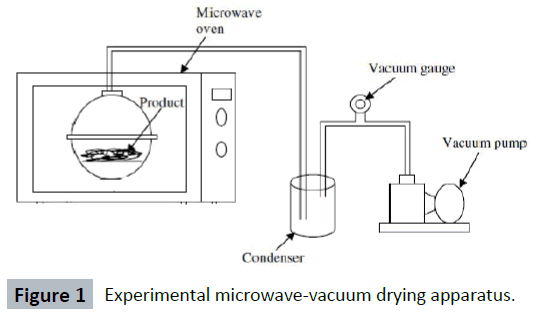
Figure 1: Experimental microwave-vacuum drying apparatus.
Shrinkage measurement
For measuring the shrinkage ratio in grapes during drying samples were selected and their exact initial weights were recorded. The initial dimension of individual sample were measured with a vernier caliper with least count of 0.01 cm, the initial apparent volumes of grapes were determined by toluene displacement method with an accuracy of 0.1 ml. the fresh samples were dried to six different desired moisture contents of 70, 60, 50, 40, 30 and 20% (wb) in separate experiments. The samples were removed from the dryer when they attained a pre calculated weight corresponding to the desired level of moisture content. The dried sample were then cooled in desiccators for sometimes and stored in sealed plastic bags for at least 30 minutes to allow the internal moisture to equalize. The final weight, dimension and volume were measured. These partially dried samples were coated with a thin layer of paraffin wax film (melting point: 58 to 62°C) to prevent penetration of toluene during volume measurements. The volume of wax film was considered negligible. Each experiment was replicated twice. The shrinkage ratios were calculated as the ratio of volume and length or diameter at any moisture content level to their corresponding initial values. The initial and final apparent densities were calculated for different moisture levels as the ratio between the total weight of the sample and its apparent volume [29,30].
Results and Discussions
The changes (reduction) in volume of the samples with moisture content are shown in Figures 2 and 3 for both pretreated and control sample. These figures show the mechanism of shrinkage during drying. When water is extracted from the material, a pressure imbalance; that is variation in pressure between the inner of the material and the external pressure, is produced generating contracting stresses that lead to material shrinkage or breakdown, changes in shape and sometimes cracking of the product. It was observed that reduction in volume was higher in the initial stage of drying than the later stage. After the moisture content has reached to approx. 30% (wb), volume changes was negligible for both type of sample (pretreated and control). From the results obtained as shown in Table 1. It was observed that there was about 67.5% reduction in volume at 20% moisture content (wet basis) took place. Figures 4 and 5 show the effect of system parameters on shrinkage ratio; Figure 4 shows the effect of system pressure on shrinkage ratio while Figure 5 shows the effect of microwave system power level. It is clear by observing Figures 4 and 5 that system pressure has more pronounced effect on shrinkage ratio than power level. Figures 6 and 7 exhibits the correlation between shrinkage ratio and moisture ratio for both type of sample pretreated and control. A good linear regression was obtained by fitting the experimental data to model equation (9) for all the cases. Figures 6 and 7 exhibit the correlation between shrinkage ratio and moisture ratio for both type of sample pretreated and control respectively. A good linear regression was obtained by fitting the experimental data to the model eqn. (9) for all the cases. Table 2 shows the constants of the above regression equations. Linear relation may propose that volume of food product that is lost in drying is equivalent to volume of water removed. Using the shrinkage data, the apparent densities at different moisture content was calculated according to model eqn. (10). Figures 8 and 9 represent the experimental apparent density at different moisture contents. It is observed that apparent density decreases as the water is removed from the grapes, this is because MVD results in porous nature of the sample.
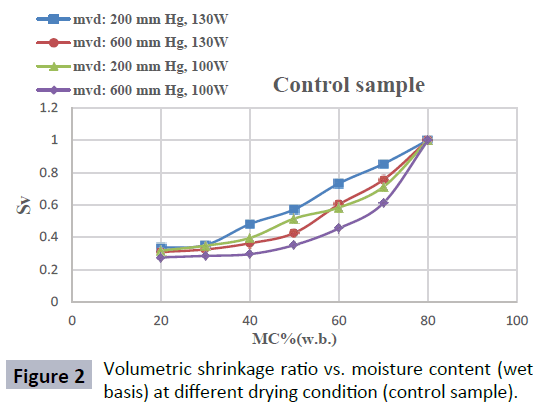
Figure 2: Volumetric shrinkage ratio vs. moisture content (wet basis) at different drying condition (control sample).
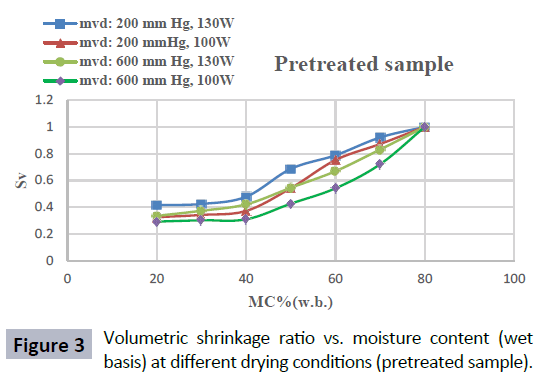
Figure 3: Volumetric shrinkage ratio vs. moisture content (wet basis) at different drying conditions (pretreated sample).
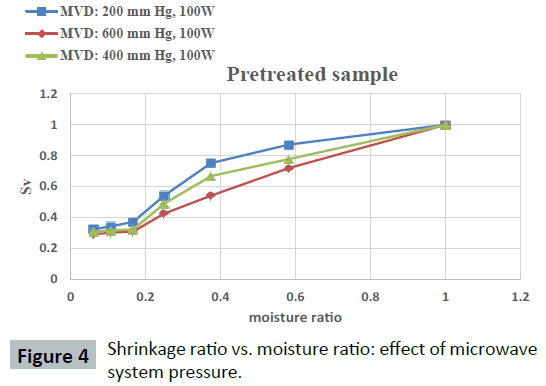
Figure 4: Shrinkage ratio vs. moisture ratio: effect of microwave system pressure.
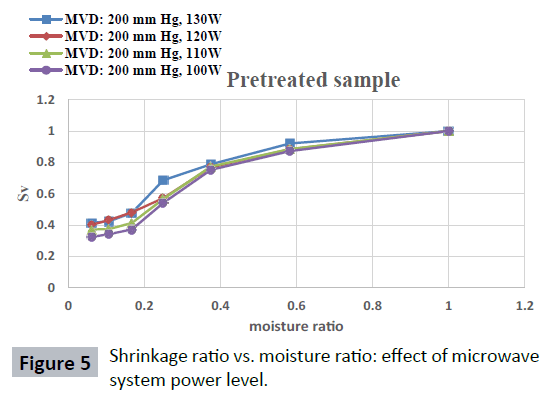
Figure 5: Shrinkage ratio vs. moisture ratio: effect of microwave system power level.
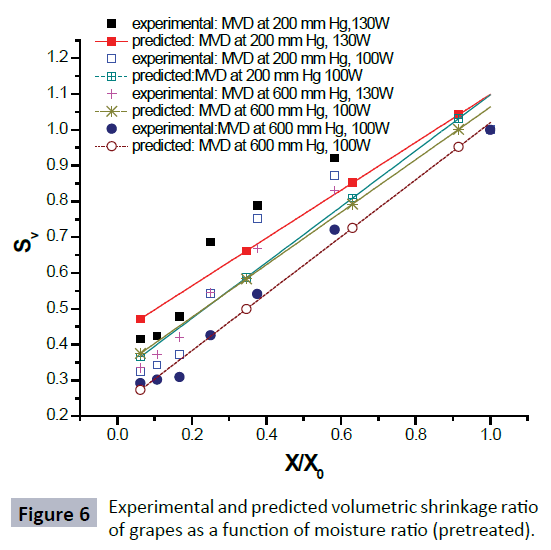
Figure 6: Experimental and predicted volumetric shrinkage ratio of grapes as a function of moisture ratio (pretreated).
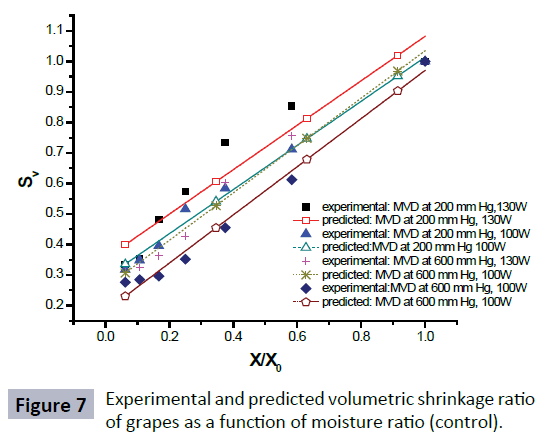
Figure 7: Experimental and predicted volumetric shrinkage ratio of grapes as a function of moisture ratio (control).
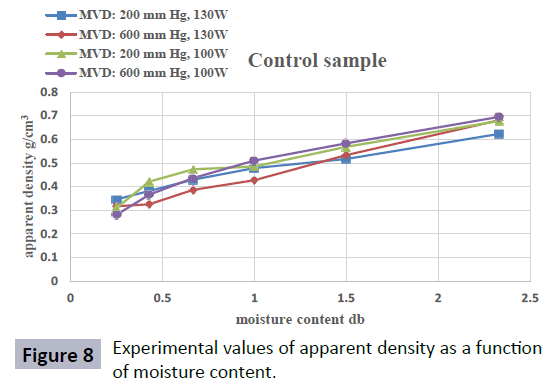
Figure 8: Experimental values of apparent density as a function of moisture content.
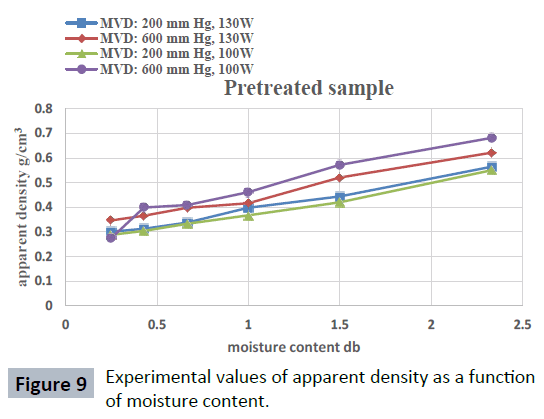
Figure 9: Experimental values of apparent density as a function of moisture content.
Table 1: Shrinkage ratio and apparent densities of grapes at different moisture content.
| Drying method |
Operating condition |
Moisture content% (wb) |
Shrinkage ratio |
Apparent density g/cm3 |
| Pre-treated Sample |
Control sample |
Pre-treated sample |
Control sample |
| MVD |
200 mm Hg
130 W |
70
60
50
40
30
20 |
0.921
0.788
0.686
0.478
0.424
0.415 |
0.854
0.733
0.573
0.482
0.352
0.335 |
0.565
0.444
0.398
0.338
0.313
0.301 |
0.623
0.517
0.478
0.429
0.382
0.346 |
| MVD |
600 mm Hg
130 W |
70
60
50
40
30
20 |
0.831
0.669
0.545
0.421
0.373
0.335 |
0.756
0.603
0.427
0.363
0.325
0.309 |
0.622
0.521
0.416
0.398
0.366
0.347 |
0.681
0.533
0.427
0.386
0.325
0.317 |
| MVD |
200 mm Hg
100 W |
70
60
50
40
30
20 |
0.872
0.752
0.542
0.372
0.342
0.325 |
0.712
0.584
0.516
0.396
0.348
0.318 |
0.551
0.42
0.367
0.333
0.304
0.288 |
0.678
0.568
0.485
0.473
0.421
0.310 |
| MVD |
600 mm Hg
100 W |
70
60
50
40
30
20 |
0.872
0.752
0.542
0.372
0.342
0.325 |
0.612
0.455
0.352
0.296
0.285
0.276 |
0.682
0.572
0.461
0.409
0.399
0.275 |
0.695
0.583
0.510
0.436
0.366
0.281 |
Table 2: Correlation constants of the linear model representing the shrinkage of raisin at various drying.
| Drying condition |
Pretreated sample |
Control sample |
| Constant X |
Coefficient Y |
R2 |
Constant X |
Coefficient Y |
R2 |
| MVD:200 mmHg, 130 W |
0.2301 |
0.7686 |
0.9818 |
0.3538 |
0.7279 |
0.9894 |
| MVD:600 mmHg, 130 W |
0.2295 |
0.7339 |
0.9711 |
0.2584 |
0.7758 |
0.9774 |
| MVD:200 mmHg, 100 W |
0.1769 |
0.7806 |
0.9864 |
0.2907 |
0.7228 |
0.9875 |
| MVD:600 mmHg, 100 W |
0.2237 |
0.7960 |
0.9871 |
0.1813 |
0.7887 |
0.9836 |
Conclusion
It is clear by observing the results that shrinkage of pretreated sample was lesser than the untreated sample, possible reason may be the depletion of waxy layer while pretreatment leading to porous nature of the sample. The porous sample leads to easy removal of moisture from within the sample to the surface without destructing the fibrous structure of grapes sample, since there was no destruction of fibrous structure of grape and there was easy removal of moisture hence comparatively lesser shrinkage. Shrinkage ratio of grapes reduced linearly with the moisture content. Experimental data showed that system pressure had more significant effect on shrinkage and density than the power level during microwave-vacuum drying. Simple mathematical models were used to correlate the shrinkage ratio and apparent density with moisture content of grapes.
References
- Azzouz S, Peter K, Brandon P (2002) Moisture diffusivity and drying kinetic equation of convective drying of grapes. J Food Eng 55: 323-330.
- Crank J (1975) The mathematics of diffusion. Clarendon Press: Oxford UK.
- Dincer lbrahim (1996) Sun drying of sultana grapes. Drying Technology 14: 1827-1838.
- Drouzas AE, Tsami E, Saravacos GD (1999) Microwave/vacuum drying of model fruit gels. J Food Eng 39: 117-122.
- Eissen W, Mühlbauer W, Kutzbach HD (1985) Solar drying of grapes. Drying Technology 3: 63-74.
- Esmaiili M, Aden S, Burde P (2007) Grape drying: a review. Food Reviews International 23: 257-280.
- Fish BP (1958) Diffusion and thermodynamics of water in potato starch gel. Fundamental Aspects of the Dehydration of Foodstuffs 143-157.
- Fohr JP, Arnaud G (1992) Grape drying: from sample behavior to the drier project. Drying Technology 10: 445-465.
- Gekas V, Lamberg I (1991) Determination of diffusion coefficients in volume changing systems application in the case of potato drying. J Food Eng 14: 317-336.
- Giri SK, Prasad S (2006) Modeling shrinkage and density changes during microwave-vacuum drying of button mushroom. Int J Food Prop 9: 409-419.
- Giri SK, Prasad S (2007) Drying kinetics and rehydration characteristics of microwave-vacuum and convective hot-air dried mushrooms. J Food Eng 78: 512-521.
- Hatamipour MS, Mowla D (2002) Shrinkage of carrots during drying in an inert medium fluidized bed. J Food Eng 55: 247-252.
- Khraisheh MA, Cooper MTJR, Magee TRA (1997) Shrinkage characteristics of potatoes dehydrated under combined microwave and convective air conditions. Drying Technology 15: 1003-1022.
- Lecas M, Brillouet JM (1994) Cell Wall Composition of Grape Berry Skins. Photochemistry 35: 1241-1243.
- Lin TM, Durance TD, Scaman CH (1998) Characterization of vacuum microwave, air and freeze dried carrot. Food Research International 31: 111-117.
- Lozano J E, Rotstein E, Urbicain MJ (1983) Shrinkage, porosity and bulk density of foodstuffs at changing moisture contents. J Food Sci 48: 1497-1502.
- Maskan Medeni (2001) Drying, shrinkage and rehydration characteristics of kiwifruits during hot air and microwave drying. J Food Eng 48: 177-182.
- Moreira R, Figueiredo A, Sereno A (2000) Shrinkage of apple disks during drying by warm air convection and freeze drying. Drying Technology 18: 279-294.
- Pangavhane DR, Sawhney RL (2002) Review of research and development work on solar dryers for grape drying. Energy conversion and management 43: 45-61.
- Raghavan GSV, Silveira AM (2001) Shrinkage characteristics of strawberries osmotically dehydrated in combination with microwave drying. Drying Technology 19: 405-414.
- Rahman MS, Perera CO, Chen XD, Driscoll RH, Potluri PL (1996) Density, shrinkage and porosity of calamari mantle meat during air drying in a cabinet dryer as a function of water content. J Food Eng 30: 135-145.
- Raouzeos GS, Saravacos GD (1986) Solar drying of raising. Drying Technology 4: 633-649.
- Sharma GP, Prasad S (2001) Drying of garlic (Allium sativum) cloves by microwave–hot air combination. J Food Eng 50: 99-105.
- Sjöholm I, Gekas V (1995) Apple shrinkage upon drying. J Food Eng 25: 123-130.
- Tulasidas TN, Raghavan GSV, Mujumdar GSV (1995) Microwave Drymg of Grapes in a Single Mode Cavity at 2450 Mhz-I Drying Kinetics. Drying Technology 13: 1949-1971.
- Tulasidas Tarikere (1995) Combined convective and microwave drying of grapes. Drying Technology 13: 1029-1031.
- Wang N, Brennan JG (1995) Changes in structure, density and porosity of potato during dehydration. J Food Eng 24: 61-76.
- Williamson Gary, Arianna Carughi (2010) Polyphenol content and health benefits of raisins. Nutrition Research 30: 511-519.
- Winkler AJ, Cook JA, Kliewer WM, Lider LA (1974) General Viticulture; University of California Press.
- Zhang K, Ming JH, Zhang TP (2006) Trends in microwave-related drying of fruits and vegetables. Trends in Food Science and Technology 17: 524-534.

 (1)
(1) (2)
(2) (3)
(3) (4)
(4) (5)
(5) (6)
(6) (7)
(7) (8)
(8) (9)
(9) (10)
(10)








